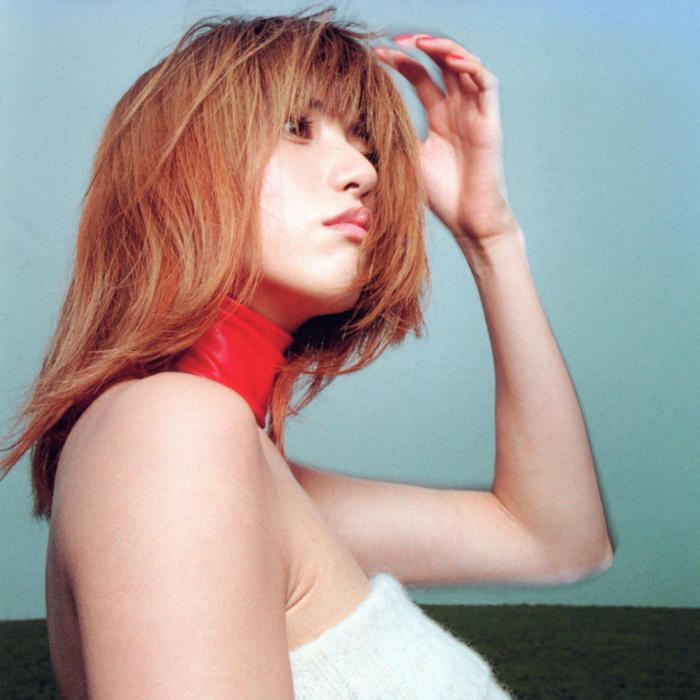Members
1 Female
Origin
 Tochigi, Japan
Tochigi, Japan
Genre
 J-Pop
J-Pop
Style
---
Mood
---
Born
1 Female
Origin
Genre
Style
---
Mood
---
Born
1976
Active 1976 to Present...
Cutout![]()
Current Record Label
Alternate Name
古谷仁美
4 users
4 users
Artist Biography
Available in:
Hitomi Furuya (古谷仁美, Furuya Hitomi, born January 26, 1976), known mononymously as hitomi, is a Japanese singer-songwriter. She began her career as model, but after meeting Tetsuya Komuro he began managing her career as a pop singer. In 1998 she left the "Komuro Family" and started working with other musicians and producers, oriented to other musical genres such as pop rock, and more recently to electropop.
Biography:
Early life:
Born Hitomi Furuya (古谷仁美, Furuya Hitomi) in Tochigi, Japan, Hitomi's family relocated to Kawasaki, Kanagawa Prefecture when she was a child. Consequently Hitomi always identified herself as a girl from Kanagawa. hitomi was an enthusiastic athlete throughout her childhood, playing baseball, soccer, and basketball, as well as an avid reader of manga. When hitomi was 16 years old, she was spotted and approached by a scout from a modelling agency. Hitomi signed a short modelling contract and began appearing in magazines while she was still in high school.
In 1993, then 17 years old, Furuya was spotted by eminent Avex music producer Tetsuya Komuro at an audition. Komuro signed Furuya to Avex, put Furuya through vocal training, and decided that she should use an all-lowercase 'hitomi' as her stage name. The following year, in November 1994, hitomi released her debut single, "Let's Play Winter", through Avex Trax, to which she wrote the lyrics. Since then, Hitomi has been the lyricist for almost all of her songs.
Debut and success:
While her first two singles, "Let's Play Winter" and "We Are "Lonely Girl"" were considerable failures, her third single "Candy Girl" was used as the theme for a Kodak CM, and secured a top 20 spot on the Japanese Oricon music chart. Subsequent singles "By Myself" and "Busy Now" established hitomi, barely out of her teens, as one to watch in Japanese entertainment. By Myself, hitomi's second album released in 1996, became her first musical work to debut at number one on the Oricon charts, and selling more than 800,000 copies it became her biggest selling album to date.
After three studio albums and twelve singles, Komuro and hitomi went their separate ways in 1998, and in 1999 she released her first greatest hits album, entitled H, that peaked at number one on the Japanese charts and sold more than a 500 thousand copies.
In 1999, her single "Kimi no Tonari" was used as the theme song for Atlus' PlayStation role-playing game Persona 2: Tsumi.
In 2000, she gained much public attention after her single "Love 2000" was used as the image song of runner Naoko Takahashi, who became popular in Japan after winning the gold medal in the 2000 Summer Olympics. This helped the song to get a lot of airplay, and the song became a commercial success, giving hitomi at the end of that year the chance to perform the song at the annual Kōhaku Uta Gassen. Her Love Life album released around that same time also caught attention within the Japanese entertainment because of its cover: hitomi appeared naked covering her breasts with her arms.
In 2001, her song "I Am" was used as the second opening for the TV anime series InuYasha.
2004-2009:
After a one year and a half hiatus, in May 2004 hitomi released a new studio album, Traveler. The concert tour she subsequently embarked upon was a huge success, and she played to packed arenas at almost every stop. As the 10th anniversary of hitomi's debut came in 2005, she opened her own record label, Love Life Records, which functioned as a subdivision of Avex. The first single to be released from the label was "Japanese Girl", her 28th single, which also marked a change in hitomi's style and looks, much more modern dance-oriented and sexy, than any of her previous works.
In 2007, she got her first lead role in the movie Akumu Tantei, and also participated in her first musical: Waiting For The Sun: Tenkimachi. On December 5, 2007 hitomi's singles compilation album Peace was released to celebrate her 13th anniversary. She released a new digital single called "Fight for Your Run☆" in August 2008.
After a year on hiatus, hitomi released a new single, "World! Wide! Love!", on May 20, 2009, and a month later she released her ninth studio album, Love Life 2. This album was a spiritual successor to her 2000 album Love Life, with hitomi once again nude on the cover of it, but this time pregnant with her child.
2011: Departure from Avex major label:
hitomi's last single in the Avex label, "Umarete Kurete Arigato/Smile World", was released on February 16, 2011. This month she also inaugurated her own baby clothing brand called PomiPomi. On March 28, 2011 it was announced on hitomi's official website that two new songs, "Special" and "Guru Maze Yeah!" would be used in the NHK educative cartoon Hana Kappa, as opening and ending themes respectively.
On April 5, 2011, it was announced that hitomi had left the Avex major label and had signed to Maximum 10, an independent label, although still affiliated to the Avex company, and owned by post-hardcore band Fact. On April 27, hitomi's tenth studio album and first indie album, Spirit, was released, and featured mainly productions of western artists such as Rivers Cuomo, Chuck Comeau, Pierre Bouvier and Gabe Saporta. In June, hitomi started her Live Tour 2011: Spirit, her first live tour in five years.
Despite of not being part of the major Avex label, hitomi still participated as some of the main artist in the tenth anniversary version of A-Nation. She was part of the line-up of the concerts held in Aichi, Osaka, and Tokio. Her performance was later included in the DVD of A-Nation released in late 2011. In August 2011, Japanese model and occasional singer Mini made a remake of hitomi's hit single "Candy Girl", which was released as a digital single in September. On November 30, 2011, hitomi released a new mini album entitled Special, in which her songs featured in the NHK educational program Hana Kappa were included. This became her last release published by the Avex major label. hitomi also collaborated with Sfpr, fellow label mates from Maximum 10, in the song "Feeder" which was included in their debut album released on January 1, 2012. On October 10, 2012, hitomi released her eleventh album Möbius (stylized as ∞). The album had no commercial singles like her previous work, although the Brian Lee-produced song "Up Down" was promoted through a music video via YouTube. In November 2013, it was announced that Hitomi would be performing the theme song for the movie Kamen Rider × Kamen Rider Gaim & Wizard: The Fateful Sengoku Movie Battle. The song, entitled "Teppen Star", was released as her 35th single on December 18, 2013.
On March 18, 2014, Hitomi released a digital single entitled "Bara Yume". The song featured girl-group MAX on backing vocals, and was meant to be an answer song to her 1995 single "Candy Girl", as part of the celebration of Hitomi's 20th anniversary in the music industry. This same month it was also announced that she would be singing the opening theme for the new season of child TV series Go-Go Tamagotchi!, and also a new song entitled "Rainbow" as its ending theme. The anime started broadcasting in April.
Personal life:
In 2002, during some routine medical examination, Hitomi seemed to have some abnormalities, and after further studies she was discovered to have a small ovarian tumor. Since it was a benign one, it was easy to remove, and she went to a successful surgical remove in late November of that year. On December 1, 2002 she married Keisuke Uesugi, a businessman and former member of hip-hop group Gasboys. They got divorced in November 2007.
On July 11, 2008, hitomi revealed on her blog that she had got married for a second time, this time to actor Masayoshi Haneda, and that she was four-month pregnant. On December 23, 2008 she gave birth to a baby girl. On December 6, 2011, she and Haneda filled the divorce, and it was made public that the couple had been in fact living separatedly for over half a year by then.
Wide Thumb
Clearart
Fanart
Banner
User Comments
 No comments yet..
No comments yet..
